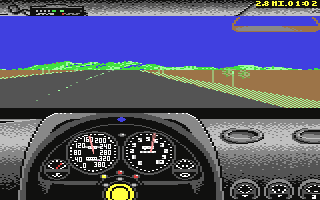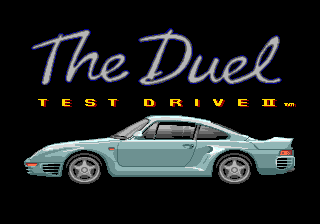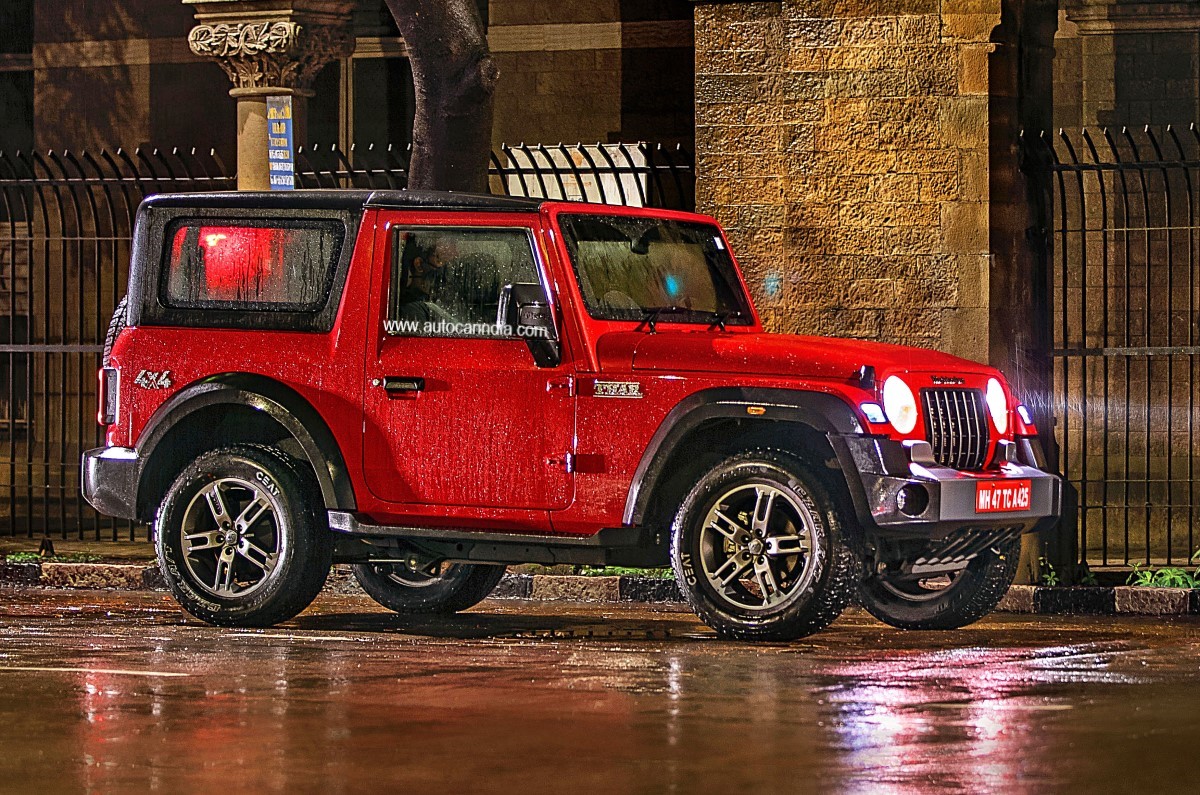
Stopping at the gas station is not mandatory, and one could drive past it if inattentive. The goal of each level is to reach the gas station at the end of the course in the least amount of time. Each level also has one or more police cars along the course. Primarily these are two to four lane public highways with many turns each level is different, and they include obstacles such as bridges, cliffs, and tunnels in addition to the other cars already on the road. Levels begin with the player’s car (and the computer opponent, if selected) idling on a roadway.

The player initially is given the opportunity to choose a car to drive and a level of difficulty, which in turn determines whether the car will use and automatic or manual transmission-the number of difficulty options varies between gaming platforms. While the first game in the series had the player simply racing for time in a single scenario, Test Drive II improves upon its predecessor by introducing varied scenery, and giving the player the option of racing against the clock or competing against a computer-controlled opponent. Like the original Test Drive, the focus of The Duel is driving exotic cars through dangerous highways, evading traffic, and trying to escape police pursuits. It is the second entry in the Test Drive series of video games. ↑ 4.0 4.The Duel: Test Drive II is a cross-platform racing game developed by Distinctive Software and published by Accolade in 1989.↑ Sega Pro, "April 1992" (UK ), page 9.

In the Snes version, music may be enabled on options. The Mega Drive version is also the only version to have in-game music by default. However, the Super NES version has a noticeable performance advantage over all other versions, although this might be achieved by its decision to render fewer objects on screen at any one time. The Mega Drive version is the more accurate of the two 16-bit console ports, with the Super NES deviating from the original design in terms of track layouts and scenery. Both console versions run at a faster frame rate with more colourful graphics, though sound effects are lacking in comparison to the Amiga version, and neither console ports offer all the features obtainable by using the game's many computer expansion disks.


Test Drive II was originally released for home computers in 1989, with the Mega Drive and Super NES console conversions arriving three years later in 1992. Accolade released further data disks for home computer versions, collectively adding a further ten vehicles. Test Drive II on the Mega Drive features only the three base cars.


 0 kommentar(er)
0 kommentar(er)
